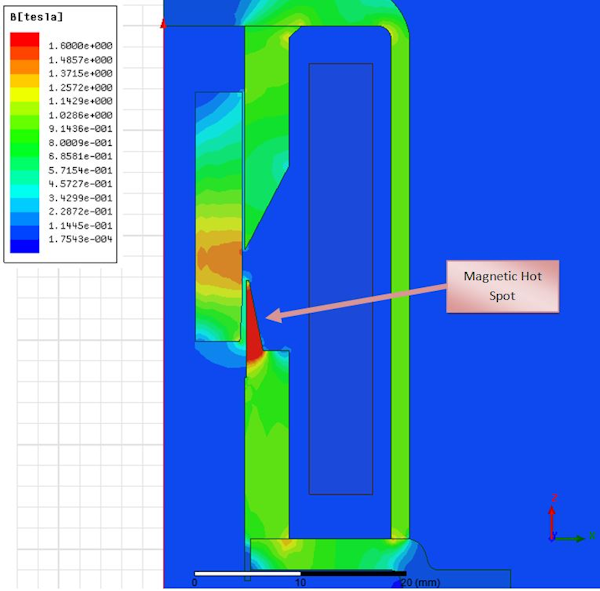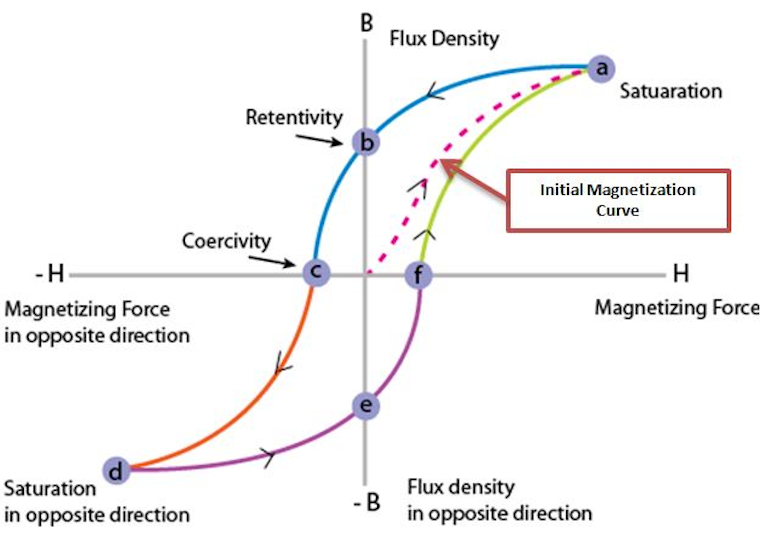Precise Proportional Solenoid Valve Control
There are two ways to approach proportional control in a solenoid valve. The first approach is to use a simple on-off valve with a variable PWM input signal to meter fluid flow. The primary advantage of this strategy is a simpler valve design. The emphasis of the valve design is on controlling the fluid flow response time and the solenoid response time to fast and repeatable values. This allows the duty-cycle and frequency of the signal to be prescribed correctly to control fluid metering on the controls side.
The second approach is to use a simple DC or PWM input signal with current control and also design the valve actuator for positional control. This can be achieved with a needle style valve or a spool valve, both of which vary the outlet orifice size as a function of solenoid actuator position. The advantage of the spool valve is the ability to control more than one fluid flow path as long as flow requirements between the paths are directly related. While a needle valve can more easily control bypass leakage, a spool valve’s effectiveness will depend on the fit of the spool and valve body. Getting to a low value for bypass leakage can often require grinding, honing and match fitting components. The emphasis on this type of valve design is matching the dynamic flow geometry to the required fluid control characteristics and gaining excellent positional control from the integrated solenoid actuator.

The precision of positional control is the modern challenge. Accuracy of positional actuators is controlled by traditional means, shaping magnetic components of the actuator to provide a linear and predictable force vs. position characteristic, then balancing that force with an opposing linearly increasing force, in its simplest form, a spring. With better precision the need for error compensation decreases. As a result, valves and actuators are designed with shorter working stroke and lower output force requirements resulting in lower power consumption and better system function and efficiency when integrated. Hysteresis is the most indicative characteristic of precise solenoid function. Measuring and characterizing actuator hysteresis exposes both frictional losses in the system and magnetic materials losses.
Minimizing friction based losses is a scientific discipline in and of itself. Strategies to reduce friction include material pairings, surface finishes, coatings, tolerances and system alignment. A particularly challenging aspect of managing friction in a proportional solenoid is that the magnetic circuit required to provide positional control characteristics is heavily dependent on radial force vectors exposing the risk of solenoid side loading and increasing the normal forces at the sliding interface. To mitigate this effect, we integrate design with manufacturing and processing strategies early in design phases to reduce variation in magnetic system alignment to effectively reduce the normal force present. In conjunction, using advanced materials pairs such as DLC coatings and PTFE fabric inserts can mitigate the effect that the normal force has on loss contributions.
Additional gains in actuator precision can be made by mitigating magnetic property based losses. Traditional solenoid core materials are ferrous alloys that react by the normally random electron spins aligning within the material when in the presence of a magnetic field. The stronger the magnetic field, the more closely aligned the spin axes become. The phenomenon of residual magnetism or retentivity occurs by the fact that those electron spins never completely return to the original random orientation, but maintain a bias (unless driven to return by a reverse polarity pulse which is not practical for positional control situations).

The traditional methods of reducing magnetic hysteresis are shaping parts to avoid magnetic flux saturation "hot spots," increasing material cross sectional area in the magnetic core to avoid saturation, or reducing power input while sacrificing force output. In the modern automotive climate, these traditional strategies are not sufficient. New core materials that can limit the retentivity without sacrificing on size, mass or performance must be used. Iron alloy with 2.5% silicone content is a traditional material that provides solenoid designers with reduced coercivity and retentivity without sacrificing on mass and performance. However, there have been further advances in more specialized alloys that accomplish this task with even better results. By combining the strategies of friction and magnetic hysteresis loss reduction, TLX Technologies, LLC is achieving 25% output force gains, proportional control precision of ± 0.5%, in a package that is 30% smaller than previous generation actuators.
This article was originally published by Transmission Technology International Magazine in September 2016
Want to explore design examples?
TLX Technologies is the go-to custom solenoid partner of the world’s top brands, first-tier suppliers, and OEMs